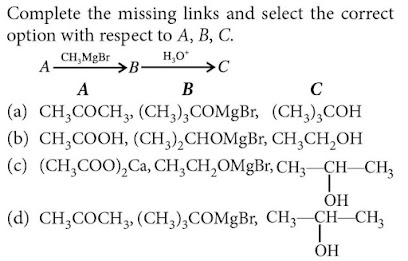Tautomerism is a chemical phenomenon where a molecule can exist in two different forms that can rapidly switch back and forth. These different forms are called tautomers. The switch between tautomers happens because a hydrogen atom moves around within the molecule.
The most common type of
tautomerism involves a molecule changing between a form with a certain
arrangement of atoms (called the keto form) and a form with a slightly
different arrangement of atoms (called the enol form). This change usually
involves the movement of a hydrogen atom.
These different forms can have
different chemical properties and behaviors. For example, they may react
differently with other substances or have different levels of acidity. The
balance between the different tautomeric forms depends on factors like
temperature, the type of solvent, and the pH of the solution.
Tautomerism can occur under
specific conditions, such as:
1. Presence
of functional groups: Tautomerism is commonly observed in compounds that
contain certain functional groups, such as carbonyl (C=O) and hydroxyl (OH)
groups.
2. Proton
transfer: Tautomerism involves the migration of a hydrogen atom or proton
within the molecule. This transfer can occur when there are appropriate acidic
or basic sites within the molecule.
3. Favorable
thermodynamics: Tautomerism is influenced by factors such as temperature and
energy differences between the tautomeric forms. The conversion between
tautomers typically occurs when it is thermodynamically favorable.
4. Solvent
effects: The choice of solvent can impact tautomerism. Different solvents can
stabilize or destabilize specific tautomeric forms, leading to a shift in the
equilibrium between them.
5. pH
dependence: Tautomeric equilibria can be pH-dependent. For example, in the case
of keto-enol tautomerism, the enol form is typically favored under acidic
conditions, while the keto form is more stable under basic conditions.
One specific example of
tautomerism is the interconversion between the keto form and the enol form of a
compound called tautomeric aldehydes or ketones.
Aldehydes and ketones are organic
compounds that contain a carbonyl group (C=O). Tautomeric aldehydes or ketones
exhibit tautomeric behavior due to the presence of certain functional groups
and the ability to undergo proton transfer.
In the keto form, tautomerone has
a carbonyl group (C=O) where the carbon atom is bonded to an oxygen atom. In
the enol form, the carbonyl group is converted to a hydroxyl group (-OH)
adjacent to a double bond.
The interconversion between the
keto and enol forms occurs through the migration of a hydrogen atom. The
process involves the transfer of a proton from the carbon atom adjacent to the
carbonyl group (the α-carbon) to the oxygen atom of the carbonyl group,
resulting in the formation of a double bond and the hydroxyl group.
Tautomeric aldehydes or ketones
exist as a dynamic equilibrium mixture of the keto and enol tautomers. The
ratio between the two forms is influenced by various factors, including
temperature, solvent, and pH. These factors affect the stability and energy
difference between the tautomeric forms.
ANSWER (d)










